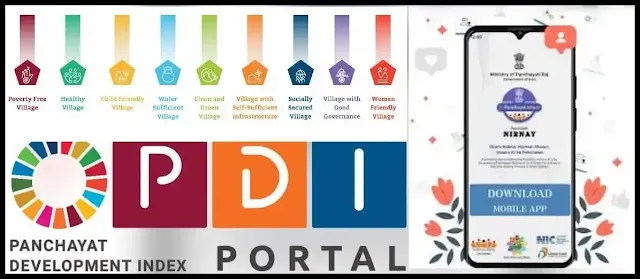Step-by-Step Tutorial: Filling PDI Data on the Portal
Introduction: In today's data-driven world, effective management of information is paramount for organizations to make informed decisions and drive progress. The Panchayat Development Index (PDI) Data Management System stands as a robust platform designed to streamline data collection, submission, verification, and analysis processes. Whether you're a field officer, a line department official, or a data analyst, this guide will walk you through each step of the Panchayat Development Index (PDI) Data Management System, empowering you to harness the full potential of this powerful tool.
Section 1: Getting Started 
Step-by-Step Tutorial: Filling PDI Data on the Portal
Welcome to the Panchayat Development Index (PDI) Data Management System: Upon logging in, users are greeted with a user-friendly interface that serves as the central hub for accessing various functionalities.
Section 2: Offices
1 ) View Field Offices for Data Collection: Explore the network of field offices engaged in data collection activities.
2 ) Line Department Offices: Discover the line department offices responsible for verifying the collected data, ensuring accuracy and reliability.
Section 3: Enter Panchayat Development Index (PDI) Data
1 ) Download Field Office-wise Data Collection Format (DCF): Begin the data entry process by downloading the DCF tailored to your specific field office.
2 ) Enter Data into DCF: Populate the DCF with relevant information gathered from field operations.
3 ) Update DCF: Keep your data up-to-date by incorporating any changes or new insights as they arise.
Section 4: Data Submission
1 ) View DCF Before Gram Sabha: Review the DCF to be discussed before the Gram Sabha meeting, ensuring alignment with organizational objectives.
2 ) Submit Panchayat Development Index (PDI) Data for Verification:
Option 1: Through NIRNAY App (Optional): Utilize the NIRNAY app for seamless submission and verification of Panchayat Development Index (PDI) data.
Option 2: Only Gram Sabha Date Entry: Submit Panchayat Development Index (PDI) data by entering only the Gram Sabha date, simplifying the submission process.
3 ) View Panchayat Development Index (PDI) Data Submitted for Verification: Track the progress of submitted data and monitor verification status.
Section 5: Panchayat Development Index (PDI) Data Rejected by Higher Office
1 ) View Rejected Panchayat Development Index (PDI) Data: Identify data rejected by the verification office and understand the reasons for rejection.
2 ) Edit Rejected Panchayat Development Index (PDI) Data: Make necessary revisions to address issues identified during verification.
3 ) Resubmit Updated Panchayat Development Index (PDI) Data: After editing, resubmit the updated data for re-verification to ensure accuracy and completeness.
4 ) View Data Submitted for Panchayat Development Index (PDI) Calculation: Monitor data submitted for Panchayat Development Index (PDI) calculation, facilitating informed decision-making processes.
Section 6: View Data Received from Different Portals
1 ) uDISE+ Portal: Access data received from the uDISE+ portal, providing valuable insights into educational infrastructure and resources.
2 ) eGramSwaraj Portal: Explore data received from the eGramSwaraj portal, offering comprehensive information on rural development initiatives.
3 ) JJM Dashboard Portal: Gain access to data from the JJM Dashboard portal, enabling effective management of water resources and infrastructure.
4 ) PMAY Portal: Review data from the PMAY portal, supporting the implementation of affordable housing schemes.
5 ) NREGA Portal: Access data from the NREGA portal, facilitating monitoring and evaluation of rural employment programs.
6 ) SBM-G Portal: Explore data from the SBM-G portal, supporting initiatives aimed at achieving Swachh Bharat Mission goals.
7 ) Mission Antyodaya Portal: Access data from the Mission Antyodaya portal, aiding in poverty alleviation efforts and rural development.
8 ) NSAP Portal: Review data from the NSAP portal, supporting social welfare programs aimed at vulnerable populations.
Conclusion:
The Panchayat Development Index (PDI) Data Management System serves as a powerful tool for organizations seeking to optimize their data management processes. By following the steps outlined in this guide, users can navigate the system with confidence, leveraging its features to streamline data collection, submission, verification, and analysis. Whether you're a field officer, a line department official, or a data analyst, the Panchayat Development Index (PDI) Data Management System empowers you to make informed decisions and drive positive change within your organization.
